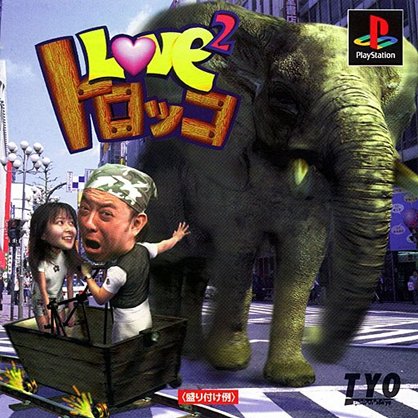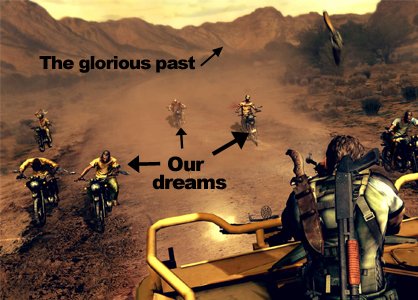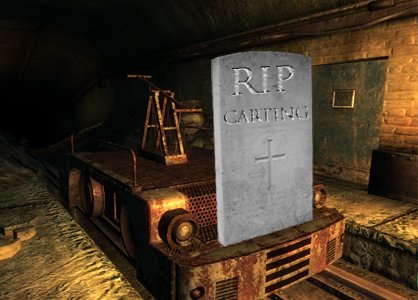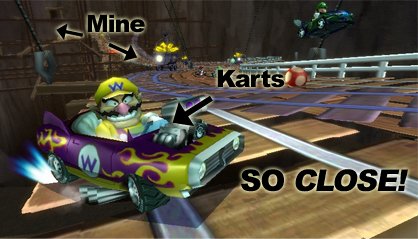The rise and fall of the mine cart level
The art, science, and tragic history of the greatest gaming innovation known to man
Given the mine cart’s cultural dominance over 2D gaming, it seemed like nothing could go wrong. But, much like the wife in a crappy TV movie randomly contracting a terminal illness to add some contrived drama to the final reel, it all went wrong very suddenly and without warning. The reason? Sad to say, the mine cart level was a victim of both its own success and the cynicism of games journalists. Yes, its death was partly our fault.

So staple had become these literal on-rails thrill rides that the language of games reviews visibly changed as their popularity increased. What started as “Wow! There’s even a mine cart level!” changed to “Of course, there are mine cart levels”; eventually becoming “…the obligatory mine cart levels”, before finally, in some cases, switching to the likes of “these bastard clichéd mine cart levels need to f*ck off and die in a fire”.
Those miserable old cynics thought they had the right idea, but so did Ed Gein, and look what that eventually led to. Yeah, Gus van Sant’s bloody awful Psycho remake, that's what. But as wrong as those journos clearly were, the damage to carting’s image was done.

And it was gaming’s fault as well. As 3D became more popular and antiquated, anachronistic old traditions like fun were replaced by grim-faced shooty-shooty, stabby-stabby,the humble platformer fell out of favour. As such, the mine cart levelno longer had a home. Stalwart platformer series like Tomb Raider and Donkey Kong made stabs at reigniting the fire but, alas it was not to be.
A few noble developers tried to keep carting alive by giving it a reinvented place in this violent new world. This recontextualisation of the old favourite was a wildly varied movement, perhaps culminating its weirdness in mine cart based dating simulators like Love Love Torokko, an action game in which a mine cart picnic had to be tailored to a date’s preferences, in order to attainromantic success. We told you mine carting brings people together:

Above: Amazingly, we didn't 'shop up this box art. But ifwe had, we'd be proud.
The attempts of Capcom's Shinji Mikami were by far the most successful however, reinventing mine carts at the same time as reinventing survival horror, in Resident Evil 4’s mine cart shoot out. Rumour has it that his whole reboot of the rapidly aging franchise was really an elaborate post-modern metaphor to highlight and launch the rebirth of mine carting within the modern gaming age. We have no problem in believing that rumour for a second.
But Sadly, Mikami’s dream was not to last. Having dabbled in 16-bit platforming with his debut game Jazz Jackrabbit, Cliffy B’s respect of 2D heritage also saw him join the movement by including a mine cart shooter section in Gears of War. But so slow was it, and so focused upon carts as cover rather than carts as vehicles that it just didn’t feel the same.
Weekly digests, tales from the communities you love, and more
The final blow came with Resident Evil 5. A slap in the face for Mikami and everything he had tried to do for mine carts with Resi 4, Kenichi Ueda’s sequel was the subverted flip-side of the metaphor. So similar to the previous game throughout that it could only have been intended as an artistic statement regarding the rapid stagnation of game design innovations, it crescendoed its nihilistic symbolic message by providing us with a rail-equipped mine section completely empty of cart riding. Essentially a playable metaphor for the arguments of those cynical journos of old, it was like shooting our way through a barren womb.

The final barb was in the way thatit even set us up for a return to Resi 4’s finest moment by actually allowing us to climb into a cart at the entrance to said mine, before revealing its run to be pointlessly short and uneventful, ending before the mine proper even began. Truly the most poignant in-game requiem for video game mine cart riding imaginable, Ueda’s standpoint on the genre was made with inarguable clarity. But did he have to be so cruel?
The ultimate nail in the coffin? Fallout 3’s recent DLC, The Pitt. Oh how our hearts leapt as we approached the pump cart at the beginning, knowing that it was to be our transport to the new city. Oh how we wept as the screen simplyfaded to white upon its activation. Oh how we sobbed and wailed as the whole journey happened off-camera.
Oh Bethesda… No respect for the Old Ways…

Hope for the future
Will we ever see our most beloved video game staple return in any meaningful fashion? The resurgence of 2D gaming on XBLA and PSN has given us reason to believe again, and Chair Entertainment's recent Shadow Complex even went so far as to include a tiny, one-screen mine cart jump in clear tribute. Perhaps it was a technology test for an entirely mine cart based game to come. We can but hope.

It should also be noted that several modern games keep the spirit alive in more understated, abstractways. What is Mario Kart Wii’s Wario’s Goldmine track if not a loving tribute? Sticking with Nintendo, Super Smash Bros. Brawl's Subspace Emissary missions include the odd dash of simple mine carting too. And it would be unwise indeed to ignore the mechanical similarities between traditional mine carting and Ratchet and Clank’s grind rails. It could even be argued that the time trial, reaction-heavy platforming of Sonic Unleashed is naught but PMC on feet instead of wheels. So we shall.
LittleBigPlanet’s Mines level also recently gave us a moderate bite of hot carting action, and perhaps Media Molecule’s game points the way to the salvation of carting. After all, LBP is a physics-based platformer, and nothing says “physics-based platforming” like the raging inertia of a good mine cart ride. And of course,the extensive content creation facilities make it possible for us to bring back carting all on our own.
Or rather, they make it mandatory. Because having mine cart rides in your games isn’t just your right. It’s more important than that. It’s your God-given duty. LBPers, the future is yours. Don’t let us down.


It floats in water

How we learned to stop worrying and love gaming's most impossibly extreme sport

The evolution of Buzz-Argh-Squelch action throughout the ages



